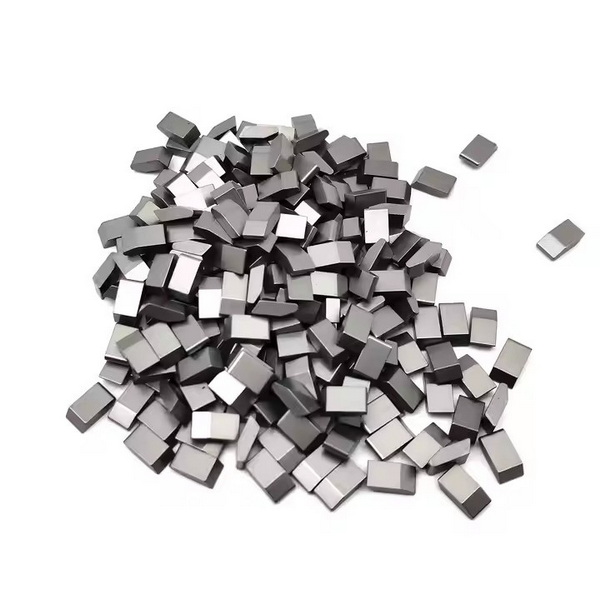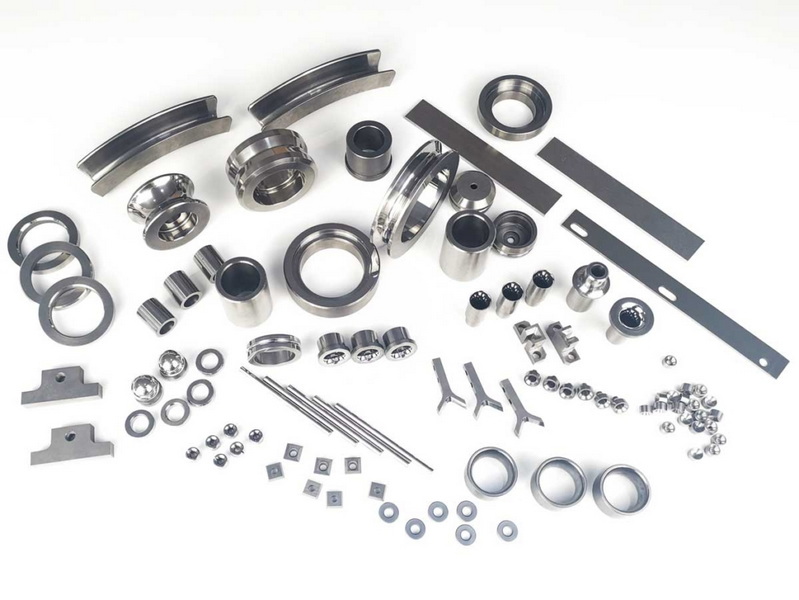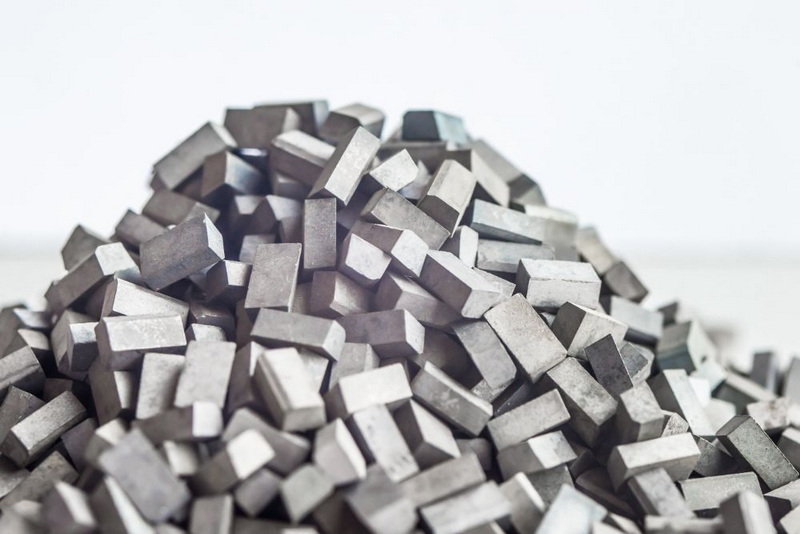Content Menu
● What is Tungsten Carbide?
● Properties of Tungsten Carbide
● Applications of Tungsten Carbide
>> Cutting Tools
>> Wear Parts
>> Drilling and Mining
>> Milling Industry
>> Aerospace and Aviation
>> Oil and Gas Production
>> Manufacturing and Industrial Processing
>> Power Generation
>> Construction
>> Other Applications
● Advantages of Using Tungsten Carbide on Metal
● Conclusion
● FAQ
>> 1. What makes tungsten carbide so hard?
>> 2. How is tungsten carbide made?
>> 3. Can tungsten carbide be used on hardened steel?
>> 4. What are the limitations of using tungsten carbide?
>> 5. How do you maintain tungsten carbide tools?
● Citations:
Tungsten carbide is a highly versatile composite material renowned for its exceptional hardness, wear resistance, and durability[1][6]. These properties make it suitable for a wide range of applications across diverse industries, including aerospace, oil and gas, manufacturing, and construction[1][2][4]. This article explores the properties, applications, and benefits of using tungsten carbide, particularly in metalworking and other industrial processes.

What is Tungsten Carbide?
Tungsten carbide is a chemical compound comprising equal parts of tungsten and carbon atoms[2][6]. It typically exists as a powder, which is then shaped through a sintering process[2]. During sintering, the tungsten carbide powder is mixed with a binder metal, such as cobalt, and then heated to a high temperature to create a solid composite material[6]. The resulting material combines the hardness and wear resistance of tungsten carbide with the toughness and strength of the binder metal[6].
Properties of Tungsten Carbide
Tungsten carbide possesses a unique combination of properties that make it invaluable in many industrial applications:
- Hardness: It is exceptionally hard, nearly as hard as diamond, allowing it to cut and shape other materials effectively[1][6].
- Wear Resistance: It exhibits excellent resistance to abrasion and wear, ensuring a long service life even in harsh conditions[1][5].
- Strength and Durability: The composite material is strong and durable, capable of withstanding high stress and pressure[1].
- Heat Resistance: It maintains its strength and hardness at high temperatures, making it suitable for high-speed machining operations[1].
- Corrosion Resistance: Tungsten carbide resists corrosion from many chemicals, extending its applicability in harsh environments[4][5][6].
- Versatility: It can be molded into various shapes and sizes for diverse applications[3][4].
Applications of Tungsten Carbide
Tungsten carbide finds extensive use across numerous industries due to its superior properties[1][2][4].
Cutting Tools
Tungsten carbide is commonly used in manufacturing cutting tools such as drills, milling cutters, taps, cutting wheels, and saw blades[1][2][5]. Its hardness and wear resistance enable these tools to machine hard materials like steel, titanium, and other carbides[5].
Wear Parts
It is used to make wear parts for machinery and equipment in industries such as oil and gas, mining, and pulp and paper[1][5][6]. These parts benefit from the material's high wear and corrosion resistance, ensuring longevity and reliability[1][5].
Drilling and Mining
Tungsten carbide is crucial in the drilling and mining industries, where it is used in drill bits and other equipment that must withstand highly abrasive conditions[1][2].
Milling Industry
Approximately 10% of tungsten carbide is used in the milling industry for end mills and mill inserts[3][4]. Its ability to be molded into precise shapes while maintaining toughness makes it ideal for creating accessories for grinding and milling applications[3][4].
Aerospace and Aviation
In the aerospace industry, tungsten carbide coatings protect critical engine components from wear[1]. Turbine blades, compressor seals, and landing gear components benefit from the material's ability to maintain strength under severe stress and erosive conditions[1].
Oil and Gas Production
The oil and gas industry utilizes tungsten carbide coatings to protect drilling equipment and production components[1]. Drill bits, valve stems, and pump components operating in abrasive, high-pressure environments benefit from its wear resistance and corrosion protection[1].
Manufacturing and Industrial Processing
Tungsten carbide-coated tools and components are valuable in metal forming and processing[1]. Its hardness and wear resistance extend the service life of cutting tools in high-speed machining operations[1]. Mixers, extruders, and material handling components also use tungsten carbide coatings to resist abrasive wear and maintain precise tolerances[1].
Power Generation
Power generation facilities use tungsten carbide coatings to protect turbine components from erosion caused by steam, particulates, and high-temperature gases[1]. This helps maintain efficient operation in steam and gas turbine applications[1].
Construction
Tungsten carbide is used in construction materials such as saws and drill bits because of its strength[4]. It can effectively penetrate challenging materials like cement and asphalt[4].
Other Applications
- Jewelry: Due to its durability and scratch resistance, tungsten carbide is used in jewelry, particularly rings[2][3][4].
- Surgical Instruments: Its corrosion resistance and ability to enhance performance make it suitable for surgical instruments[4][6].
- Mill Products: Tungsten carbide is used to manufacture mill products, including end mills and mill inserts for grinding and milling applications[3].
- Alloys and Composites: It is used to create specialized alloys and composite materials with other metals like nickel, iron, silver, and copper for use in construction, electronics, and radiation shielding[3].
- Injection Molding: Precision molds for plastic injection molding are often made from tungsten carbide, providing high precision, durability, and wear resistance[5].

Advantages of Using Tungsten Carbide on Metal
Using tungsten carbide on metal offers several distinct advantages:
- Extended Tool Life: Tungsten carbide cutting tools last significantly longer than tools made from other materials, reducing downtime and replacement costs[1].
- Improved Cutting Performance: The hardness and wear resistance of tungsten carbide enable more efficient and precise cutting, leading to higher quality finishes[1].
- Enhanced Productivity: The ability to maintain sharp cutting edges at high speeds translates to increased productivity in machining operations[1].
- Cost Savings: Although tungsten carbide tools may have a higher initial cost, their extended lifespan and reduced downtime result in overall cost savings[1].
- Versatility: Tungsten carbide can be used on a wide range of metals, including hardened steels, cast iron, and non-ferrous materials[5].
- Precision: Its ability to be molded into precise shapes makes it ideal for applications requiring high accuracy, such as in the milling industry[3][4].
Conclusion
Tungsten carbide is an exceptional material whose unique properties make it invaluable across a wide array of industrial applications[1][2][4]. Its hardness, wear resistance, strength, and versatility make it particularly well-suited for use on metal in cutting tools, wear parts, and coatings[1][5]. The advantages of using tungsten carbide, including extended tool life, improved cutting performance, and enhanced productivity, contribute to significant cost savings and operational efficiencies[1]. As technology advances, tungsten carbide will likely continue to play a crucial role in manufacturing, aerospace, oil and gas, construction, and other industries[1][2][4].

FAQ
1. What makes tungsten carbide so hard?
Tungsten carbide's hardness comes from the strong covalent bonds between tungsten and carbon atoms[6]. This structure creates a dense, rigid material that resists deformation[6].
2. How is tungsten carbide made?
Tungsten carbide is made by mixing tungsten powder with carbon black and heating it in a furnace at high temperatures, a process known as carburization[2][6]. The resulting powder is then mixed with a binder metal, such as cobalt, and sintered to create a solid composite[2][6].
3. Can tungsten carbide be used on hardened steel?
Yes, tungsten carbide can be used on hardened steel[5]. Its extreme hardness and wear resistance allow it to effectively cut and shape hardened steel components[5].
4. What are the limitations of using tungsten carbide?
While tungsten carbide is very hard, it can be brittle and prone to chipping under certain conditions[6]. It is also more expensive than some other tool materials[1].
5. How do you maintain tungsten carbide tools?
To maintain tungsten carbide tools, it is important to use appropriate cutting speeds and feeds, provide adequate cooling, and avoid excessive shock or vibration[1]. Regular inspection and sharpening can also extend the life of the tools[1].
Citations:
[1] https://www.linde-amt.com/resource-library/articles/tungsten-carbide
[2] https://eurobalt.net/blog/2022/03/28/all-the-applications-of-tungsten-carbide/
[3] https://www.carbide-usa.com/top-5-uses-for-tungsten-carbide/
[4] https://www.tungco.com/insights/blog/5-tungsten-carbide-applications/
[5] https://www.sollex.se/en/blog/post/about-cemented-tungsten-carbide-applications-part-1
[6] https://www.ipsceramics.com/tungsten-carbide-metals-and-ceramics-working-as-one/
[7] https://www.dymetalloys.co.uk/what-is-tungsten-carbide/tungsten-carbide-grades-applications
[8] https://www.allied-material.co.jp/en/techinfo/tungsten_carbide/use.html
















